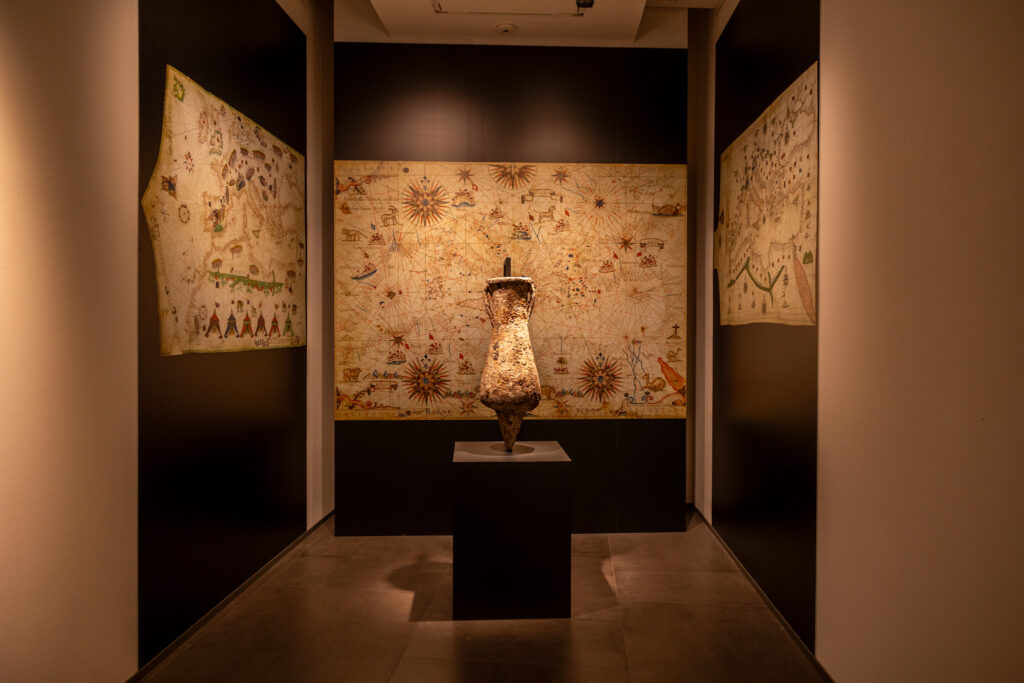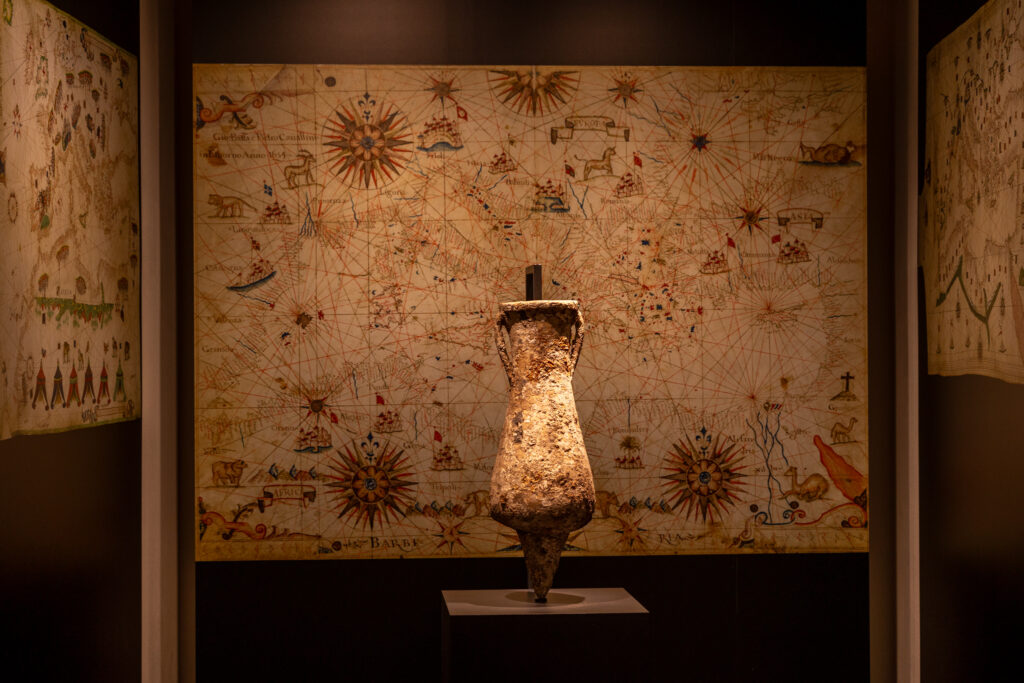
room 2 – THE GARUM ROUTES
Man’s need to preserve food, from an anthropological point of view, bears witness to the transition from nomadic to sedentary life and seems to have had an impact on social organization, facilitating the process of commercial exchange. The earliest evidence of food preservation is the use of salt, which allowed for the storage of surplus food during times of scarce hunting and fishing activities. The first traces of salted fish, preserved in a ceramic vessel, were uncovered in a prehistoric site at Al Khiday in central Sudan, as published in the Journal of Archaeological Science. But it was in the later period, thanks to Phoenician entrepreneurship, that preserved salted fish became the protagonist of a flourishing trade route along the Mediterranean coast. In particular, the very Eastern practice of using a flavorful sauce called “garum,” obtained from the transformation of the innards of oily fish, gains ground, first influencing Greek cuisine and then that of the peoples bordering the Mediterranean. There is a great deal of evidence, thanks to the many amphorae found (sometimes still intact!) at various archaeological sites. This confirms an extraordinary production chain whose pivot, then as now, was the observation of the great migrations of oily fish, the presence of salt and the availability of clay to produce the amphorae.
The classification method of the productions was also quite ingenious and represented an early form of ‘labeling’: the neck of the amphorae carried various information, such as the type of product (pure, diluted, spicy or red), information on the trader or transporter, information on the consignee, year of production and producer.
The high level of detail shows the great economic interest the Romans attached to this product and how variable the prices were depending on its quality and origin.
Garum gradually disappeared during the barbarian invasions, surviving only in very limited preparations, as did the use of salted fish, which made a comeback in the Renaissance period.
CREDITs
© Fotografie Stanze di Andrea Lops




